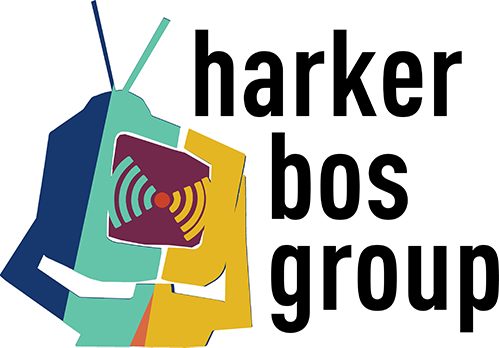Weekly Roundup – Week of October 18, 2022
Sports Media & Sports Betting News
DraftKings, Others Pull Back On Ads To Legalize California Online Sports Betting
A coalition of gambling companies led by DraftKings Inc. and FanDuel Group is pulling back on advertising for a ballot measure to legalize online sports betting in California as polls show it is likely to lose.
The online sports-betting industry’s initiative, known as Proposition 27, has drawn about $402 million in fundraising, according to campaign finance records, the most in state history. But the pro-Prop 27 campaign, which has raised $169.2 million, recently canceled about $11 million in broadcast TV and cable ads they had planned to run through Election Day, according to ad-buying data through Oct. 6 reviewed by The Wall Street Journal.
Sports TV Rights Are Costlier Than Ever – But They’re Cable’s Last Lifeline
“As Americans grapple with inflation, media companies are seeing steep increases in the cost of a valuable commodity: sports rights.
For years, companies like Walt Disney Co.’s ESPN, Comcast Corp.’s NBC, Fox Corp. and Paramount Global’s CBS have spent more and more on the rights to broadcast games. From 1980 to 2023, the five largest professional US sports leagues will have earned more than $210 billion from domestic media rights alone, according to a Bloomberg News analysis (the National Football League accounting for 65% of it.) Recently, deep-pocketed tech giants like Amazon.com Inc. and Apple Inc. have also jumped into sports broadcasting, bidding up the price that traditional media companies pay.
Several TV networks will pay the NFL roughly double their current fees to broadcast games under new long-term deals. Apple will pay Major League Soccer nearly triple the value of the league’s previous media contract. Warner Bros. Discovery Inc., which owns TBS and TNT, will pay Major League Baseball 65% more as part of a new agreement that took effect this year.
It’s not just men’s sports that are getting more expensive for broadcasters. The NCAA Women’s Basketball Tournament is expected to be worth more than $100 million a year if it’s sold as a separate package to media companies, according to a report commissioned last year by the National Collegiate Athletic Association. ESPN currently pays an average of $34 million per year for the women’s tournament and more than 20 other NCAA championships in a deal that expires in 2024.
Broadcasters have little choice but to pay up. Live sports are one of the few reasons that people still pay for cable TV. In fact, sports routinely account for the vast majority of the 100 most-watched broadcasts on TV each year, according to Sports Business Journal research. Giving up those rights would likely hasten the decline of TV viewers.”
Would The NBA Embrace Streaming For $100B?
“Twenty years ago, the National Basketball Association transformed the sports media landscape by moving most of its games from free over-the-air television to pay cable networks.
The question now is whether the league will spark another seismic shift by embracing the brave new world of streaming TV.
The NBA’s expected to seek upward of $75 billion for its next media rights package starting in 2025. It boasts rising superstars like Ja Morant and Jayson Tatum, a tech-savvy audience, and global appeal.
On the other hand, its cable-heavy distribution model is under heavy pressure from cord-cutters in the U.S. as younger consumers shift to streaming services.
Under current deals that run through the 2024-25 season, Disney’s ABC/ESPN and Warner Bros. Discovery’s TNT are paying a combined $24 billion, or $2.6 billion annually.
As the new season tips off in San Francisco and Boston on Tuesday night, the league’s media strategies could be coming full circle.”
News & Political Media News
Digital Ad Data Reveals Parties Are Targeting Two Americas
“In paid posts on the world’s largest social media platform, the country’s two political parties are speaking to two separate and distinct Americas.
Why it matters: Detailed targeting data from social media giant Meta offer a glimpse into America’s deep political divide — and how political operatives are working to exploit and adapt to it.
Driving the news: Axios analyzed more than 93,000 Facebook and Instagram ad targeting inputs from 25 campaigns, party committees and independent political spenders that have run paid posts on the platforms since July.
The data, publicly available on Meta’s political ad archive, show which consumer habits and interests those groups are using to try to reach Americans most likely to respond to their ads.
…
The most commonly used targeting criterion among the ads examined by Axios came from the Democratic side: more than 900 filtered out fans of Joe Rogan, the ultra-popular podcaster, ensuring they wouldn’t see the ads.
But two Democratic campaigns — Texas gubernatorial candidate Beto O’Rourke and Senate hopeful John Fetterman in Pennsylvania — also sought out Rogan fans for a handful of their ads.
In general, Democrats tended to target fans of NPR, magazines like Glamour and Vanity Fair, and Spanish-language outlets such as Univision, as well as people interested in “journalism” generally.
Republicans were far less likely to target people based on their media preferences, though a handful singled out prominent Fox News hosts Steve Doocy and Brian Kilmeade.
…
Republican advertisers know which grocery shoppers they don’t want to reach: dozens of their ads filtered out people interested in Trader Joe’s and Whole Foods Market.
Instead, they targeted people who eat at Chick-fil-A and Cracker Barrel and shop at outdoors stores like Cabela’s and Bass Pro Shops.
Democrats excluded Bass Pro Shops fans from hundreds of ads, and instead targeted people who shop at Nordstrom, Lululemon and Zara, and get groceries delivered by HelloFresh and Blue Apron.
Both parties also targeted people — and, among the sample Axios examined, neither excluded people — interested in Walmart.”
Netflix To Get Nielsen Ratings As Streaming Giant Rolls Out Ad-Supported Plan
Nielsen ratings are coming to Netflix
Inc.
Netflix announced Thursday that will start using Nielsen’s digital audience measurement in the U.S. to give advertisers an understanding of its reach. It said the Nielsen ratings will start sometime in 2023, marking the first time the streaming giant will have the ratings available for its content.
The move comes as Netflix prepares to roll out a plan with ads that costs $6.99 a month in countries including the U.S. on Nov. 3. The streamer is looking for other ways to grow its revenue after losing subscribers in recent quarters.
Jon Watts, managing director of the Coalition for Innovative Media Measurement, said the deal indicates that Netflix is serious about its new ad-funded tier, and is embracing the wider media and advertising ecosystem.
“It also raises interesting questions about the future evolution of the market, with TV and streaming converging, and learning to co-exist,” Watts said.
The Same People Who Listen To Podcasts Also Stream CTV (Connected TV)
“Podcast listeners bear a striking resemblance to CTV audiences.
The majority (62%) of weekly podcast listeners regularly stream ad-supported content, according to research from Acast, a podcast monetization and distribution platform.
The overlap makes sense, said Elli Dimitroulakos, Acast’s global head of ad innovation.
Podcasts are like the next phase of radio, connected TV is an evolution of television, and the people who consume both are typically more educated, have higher income and tend to live in dual-income households, Dimitroulakos said.
“They’re also demanding, and they know what they like,” she said, “as in, they’re picky about the content they consume.”
The challenge is reaching these demanding and picky audiences with targeted media, said Tomas Rodriguez, director of audio inventory partnerships at The Trade Desk.
“Addressability is relatively easy when you have cookies and mobile device IDs that get classified into third-party audience segments – but as you start moving into podcasting and CTV, you don’t have those same tools in your toolbox,” said Rodriguez, who switched to his audio-focused role last November after three years as TTD’s director of CTV inventory and partnerships.
If someone is watching a Vizio TV in an office, say, or a bar or gym, the bid request for an ad will come with a Vizio device ID attached. “But you’re not going to find that device ID in many first- or third-party segments,” Rodriguez said. “So, you need something in the middle to connect the audiences.”
Fact is, a large amount of podcast inventory isn’t tied to identifiers, which is because of the RSS feed nature of most podcast consumption."


